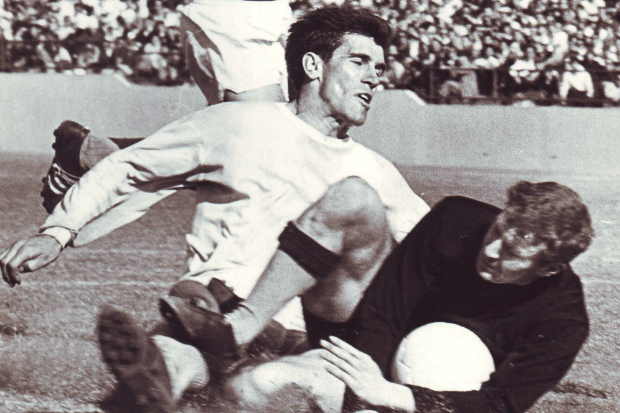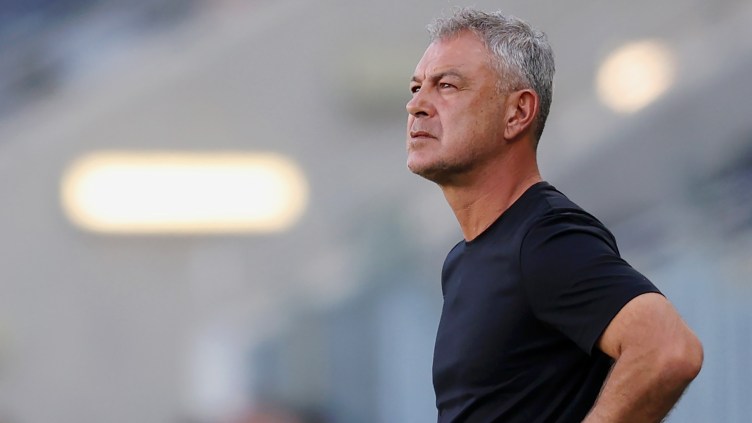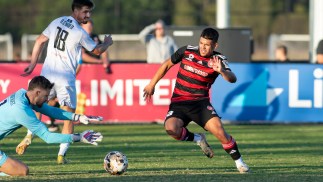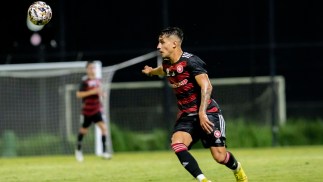The Sydney Derby may be the biggest show in town but the Hyundai A-League version wasn’t the first rivalry to be seen in our city.
Football rivalries in Sydney are nothing new so last Saturday-s encounter between the NRMA Insurance Western Sydney Wanderers and Sydney FC was merely a continuation of the past.
‘Old soccer- produced some of the greatest rivalries; some were derbies while others developed over time.
Bragging rights were the reward for victory. Nothing more, just plain old fun until the next game.
APIA Leichhardt and Marconi Stallions were the classic rivals in the older Italian community. One was founded four years earlier in the inner city – APIA in 1954 as opposed to Marconi in 1958 – while the other was the representative of the outer city/farming communities of Sydney. It wasn-t quite Roma versus Lazio, but you get the idea.
Ultimately APIA left the National Soccer League in 1991 whereas Marconi, once described by former Socceroos coach Frank Arok as the “AC Milan of Australian soccer”, lasted until the very end of the NSL in 2004.
Sydney Olympic, formerly known as Pan Hellenic, in the 1980s became major rivals to Sydney City formerly known as Hakoah. Olympic, heavily supported by Sydney-s Greek community, were often seen as the underdogs in their clashes with Sydney City supported largely by Sydney-s Jewish community in the Eastern Suburbs.
However, when Frank Lowy withdrew Sydney City from the NSL in 1987 after Round 1, ironically a number of Sydney City players joined Olympic and so too did their coach, former Socceroos mentor the late Eddie Thomson. Lowy withdrew from soccer until returning many years later as Chairman of Football Federation Australia.
Rivalries were not limited to ‘one rivalry between two teams-. There was a degree of cross-pollination.
For instance APIA Leichhardt and St George Budapest were often bragging about historical records; who won the most titles including in the years prior to the formation of the NSL in 1977.
That rivalry reached a climax in 1987 when both teams claimed the title. APIA Leichhardt won on a first-past-the-post basis having had a stellar season where they went 23 games undefeated.
In those days the NSL title was decided in the European way over the course of a season. The then governing body, the Australian Soccer Federation, had decided that 1987 was to be the last title decided like this.
Grand finals were already a feature of Australian soccer and, in the 1987 Grand Final, St George Budapest defeated APIA Leichhardt by 4-0. So who actually won the title? A compromise was reached where both teams claimed a title albeit by some slightly different name.
Matters were further complicated given that APIA Leichhardt and St George Budapest were coached by Rale Rasic and Frank Arok respectively.
At the time Arok was Socceroos coach and Rasic a former mentor of the green and gold. They had similar backgrounds and their rivalry stemmed back to when Rasic replaced Arok at St George and then the roles were reversed in the early 1970s.
Rasic to this day always claims bragging rights over Arok given that he successfully took Australia to World Cup Finals in his only campaign in charge (1974) whereas Arok failed twice to qualify for World Cups (1986 and 1990).
Marconi diversified their rivalries too. Two consecutive Grand Finals in 1989 and 1990 against Sydney Olympic where each had one victory over the other ensured that Marconi v Sydney Olympic clashes were always something special.
In true derby fashion Marconi and Sydney United (formerly Sydney Croatia) produced a healthy geographic rivalry. Both teams played their home matches literally only a couple of streets away from each other at Marconi Stadium and Edensor Park respectively. Clashes between these two teams were affectionately known as the real local derby of the NSL.
However, rivalries didn-t stop once the NSL ended. APIA Leichhardt and Sydney United, two wonderful junior nurseries of Australian football, often boast about who produced the most Socceroos.
So there they are – the rivalries, some of which are funnier than others and with no definitive outcome, that continue today with the NRMA Insurance Western Sydney Wanderers and Sydney FC. Long may it continue because football would be the poorer without them.
Image Credit: Laurie Schwab Collection, Deakin University Library




